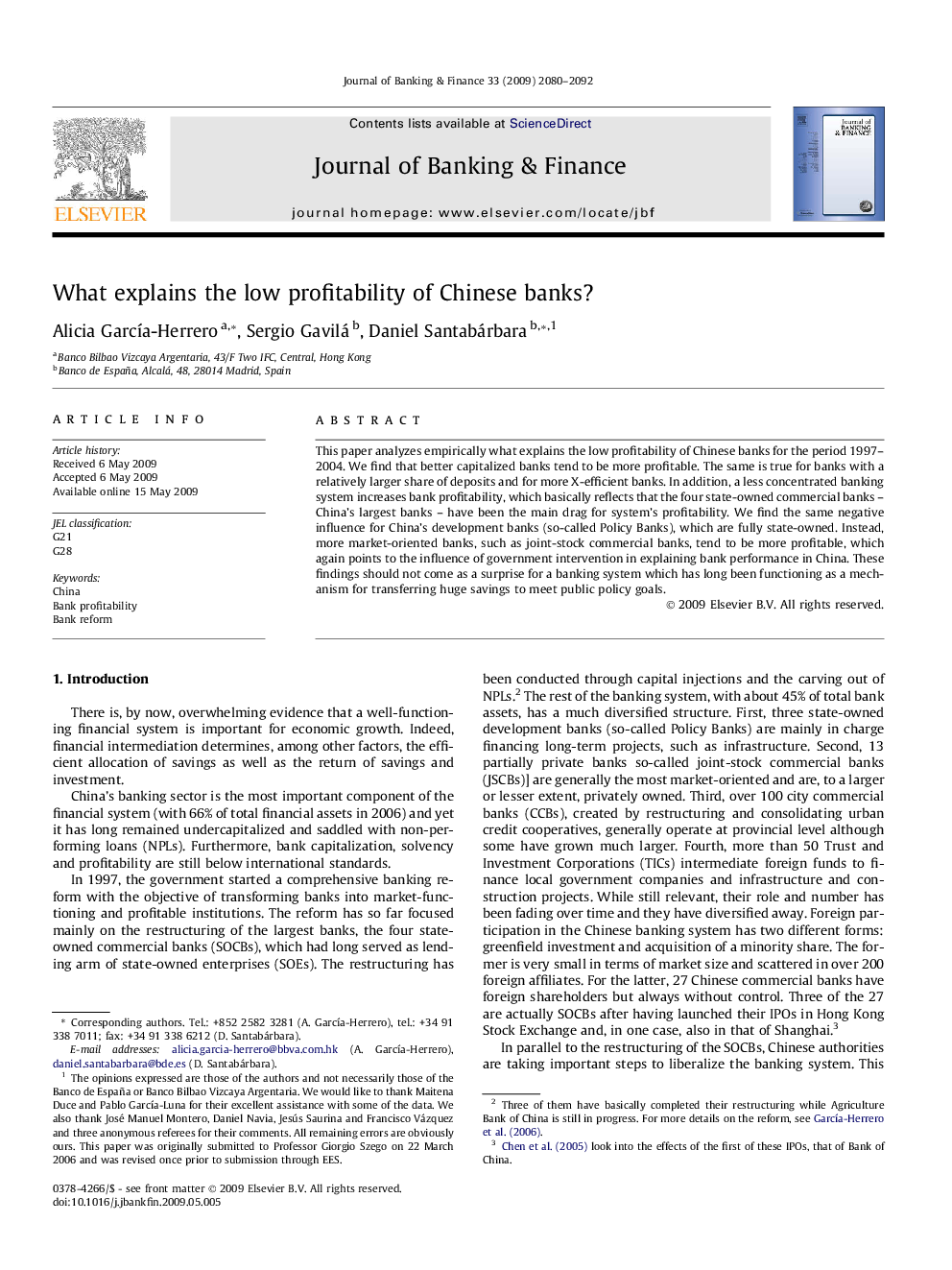| Article ID | Journal | Published Year | Pages | File Type |
|---|---|---|---|---|
| 5090228 | Journal of Banking & Finance | 2009 | 13 Pages |
Abstract
This paper analyzes empirically what explains the low profitability of Chinese banks for the period 1997-2004. We find that better capitalized banks tend to be more profitable. The same is true for banks with a relatively larger share of deposits and for more X-efficient banks. In addition, a less concentrated banking system increases bank profitability, which basically reflects that the four state-owned commercial banks - China's largest banks - have been the main drag for system's profitability. We find the same negative influence for China's development banks (so-called Policy Banks), which are fully state-owned. Instead, more market-oriented banks, such as joint-stock commercial banks, tend to be more profitable, which again points to the influence of government intervention in explaining bank performance in China. These findings should not come as a surprise for a banking system which has long been functioning as a mechanism for transferring huge savings to meet public policy goals.
Related Topics
Social Sciences and Humanities
Economics, Econometrics and Finance
Economics and Econometrics
Authors
Alicia GarcÃa-Herrero, Sergio Gavilá, Daniel Santabárbara,
